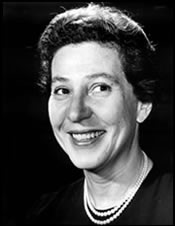
|
Compositions *** |
Concertante for Piano and Orchestra
year
1944
duration
17 ½ minutes
instrumentation
2222,2200, timpani, strings, solo piano
recording
Japan Philharmonic Symphony Orchestra, Akeo Watanabe, conducting; Reiko Honsho, piano. Composers Recording Inc., CRI SD-135, 1960, remastered onto CRI CD 692, “The Music of Vivian Fine,” 1995
movements
Andante con moto
Allegro risoluto
program notes
The Concertante for Piano and Orchestra comes at the end of Fine’s study with Sessions....When Sessions saw sketches of the Concertante both teacher and student sensed that lessons were no longer needed, Sessions saying, “Now we are colleagues.” However, Fine did attend George Szell’s class at the Mannes College because she thought she needed to learn more about orchestration. Szell saw the score and confirmed Fine’s innate sense for orchestral color.
The piano is the leader in the Concertante and has many virtuoso passages. The beginning orchestral material is a short and complex tonal statement, whereas the piano’s entrance is a longer and unrelated lyric passage that soon sheds tonal restraints and becomes the maverick element in the Concertante’s first movement’s loose sonata design. Fine explores the entire orchestral palette, featuring strings and then woodwinds before mixing orchestral colors and eventually exchanging materials in the development section, orchestrating the piano’s beginning music. The second movement is like an energetic dance, and the concerto grosso plan is evident in the pairing of the orchestra and piano as partners contrasted with sections featuring the piano as a soloist with orchestral comments. The Concertante’s virtuosity is a characteristic of Fine’s piano compositions as well as an indication of her own keyboard skills and exuberance.
–Heidi Von Gunden, liner notes to “Vivian Fine,” CRI American Masters CD 692
The Concertante, one of Fine’s few piano works to be recorded, is a two-movement piece that weaves independent solo piano lines into its rich orchestral colors. The first movement’s long, sweeping melodies are indeed diatonic (perhaps influenced by Sessions), but the comment, “There is no trace of her former radicalism and cerebralism,” is hardly accurate. Although the Concertante is clearly more tonal than compositions from her earlier period, dissonance is still present, but is now used as a point of departure from tonality, rather than as the basic framework. The first movement’s (andante con moto) lyrical main theme is tonal, but the significant number and placement of chromatic tones give the piece her individual stamp and demonstrate her changing use of dissonance. Structurally, the first movement alternates dialogue-style writing (orchestra versus piano) with sections displaying complete integration of parts.
The solo piano writing of the second movement, allegro risoluto, is highly contrapuntal and contributes to the movement’s neobaroque characterization. Accordingly, the melodies are less romantic than are the first movement’s warm, lyrical lines. Fine seems to shift between Romantic and Baroque styles of writing in the Concertante, the first movement exhibiting a Romantic nature and the second displaying Baroque tendencies. The second movement, however, contains a romantic-style cadenza, incorporating many thirds and sixths, an extended range of the keyboard, and large chords at the extremities of the keyboards; all of which suggest a Brahmsian quality. William Flanagan, in his record liner notes, summarizes the Concertante’s style: as “tonal and diatonic; chromatic relief is brought about by diatonic alteration rather than preconceived method.” He continues, “The piano writing is nimble, grateful and yet attractively reserved; the musical ideas are clearly stated, effectively worked. The piece is a model of structural and expressive clarity; it is, indeed, its own guide.”-Leslie Jones, “The Solo Piano Music of Vivian Fine,” Doctor of Musical Arts thesis, University of Cincinnatti, 1994
reviews
“…In her…Concertante it is a delight to follow the novel diatonic flow.”
–Lazar Saminsky, Musical Courier, 1944
“A tightly structured and appealingly lyrical work with a strongly neo-classic texture and rhythmic energy.”
–Sophie Fuller, The Pandora Guide to Women Composers, Harper-Collins, 1994
audio files